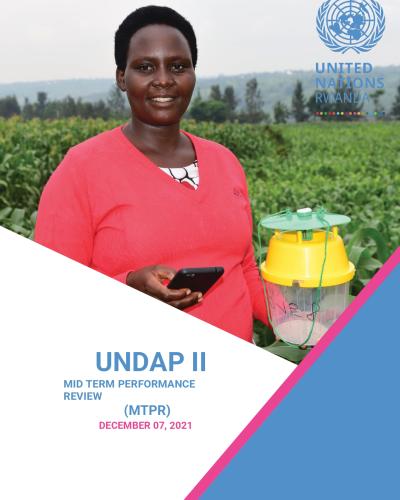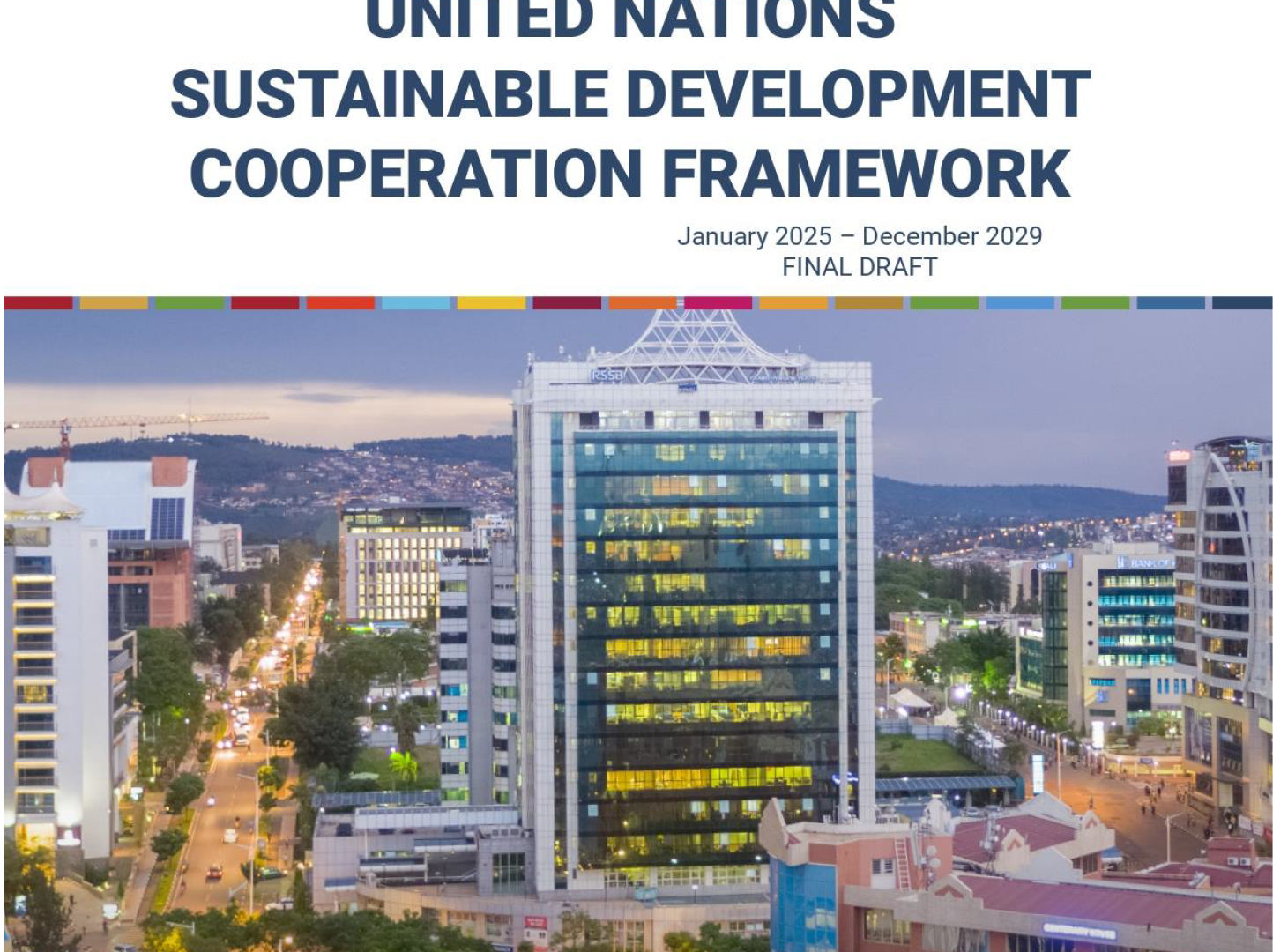UNDAP II MID TERM PERFORMANCE REVIEW (MTPR) DECEMBER 07, 2021

EXECUTIVE SUMMARY
Introduction and Background
This report presents the results of the mid-term performance review (MTPR) of United Nations Development Assistance Plan, 2018-2023, (UNDAP II) in Rwanda. UNDAP II is informed by and responds to national, regional, and global normative frameworks, including the National Strategy for Transformation 2017-2024 (NST 1), the 2030 UN Agenda for Sustainable Development, the Sustainable Development Goals (SDGs), the African Union Agenda 2063, the East African Community (EAC) Vision 2050 and Rwanda’s 2050 vision. UNDAP II was developed through a joint and participatory process that brought together government line ministries and departments, bilateral and multilateral partners, civil society organisations, the private sector, and the media. The interactive and iterative process resulted in the identification of three strategic priority areas for UNDAP II: 1. Economic Transformation; 2. Social Transformation; and 3. Transformational Governance. These three strategic priorities aim to contribute to the realization of six outcomes through delivery of twenty-five outputs at an estimated cost of US$ 631 million for both development and humanitarian assistance.
Purpose, Objectives and Scope of UNDAP II MTPR
The purpose of the UNDAP II MTPR was: to provide an overall assessment of progress and achievements made against planned results; document challenges and lessons learned over the past two and a half years and assess significant developments that have taken place in the Programming environment including the SDGs. The review will assess relevance, effectiveness, efficiency and, sustainability of delivery of UNDAP II; determine effectiveness and efficiency of the joint Programming modality and explore extent to which the five UNDAP II core Programming principles have been mainstreamed in UNDAP II. The MTPR is informed by an analytical framework as outlined in figure 2. The framework has three components which include: I) component 1- analysis of focus areas (relevance, efficiency, effectiveness, sustainability); ii) component 2- analysis of strategic positioning and; iii) component 3-assessment of core Programming principles.
Methods and Tools for data collection and analysis
Mixed Method Approach: A variety of data collection and analysis methods were used, this included review of documents; key informant interviews, stakeholder’s self-assessment and focus group discussions. The assessment used three key methods. The first method used the performance of planned outputs (Results chain principle) to determine performance of outcomes. UNDAP II key stakeholders contributed to the self-assessment of outcomes using the 'Outcome and Output Performance Assessment Tool’ (see sample tool in Annex 1) based on available evidence. The second method assessed performance of outcome indicators in the UNDAP II results framework supported by national data sources. The third was independent assessment of the MTPR by the consultant informed by a review of available data, documents review and interviews. Ratings on performance of the outcomes were classified as: “On Track” (Good progress on planned results at mid-term 50% or more), “Partially On Track” (performance lagging slightly below the 50% mark of planned results for mid-term but lower than 45% mark) and “Off Track” (Performance below 45% mark of planned results and there is evidence that the results are unlikely to be achieved by 2023). Triangulation of tools and methods ensured enough rigor to guarantee validity of the MTPR findings and recommendations. The UNDAP II MTPR process was highly participatory. A total of 82 persons were reached through in-depth interviews and consultative meetings.




















